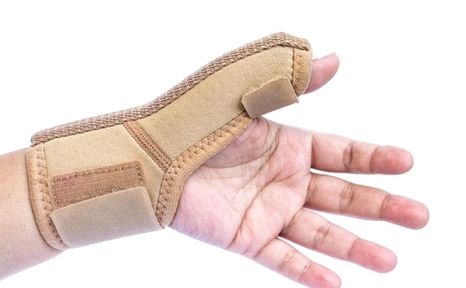


When most people think of arthritis, they probably think of pain in the hips, knees, hands, and back. But there is another body part that’s often affected by this life-altering ailment: your thumbs. According to the Arthritis Foundation, nearly 80 percent of all women age 80 and over live with osteoarthritis of the thumbs. It’s less common in men. Contending with near-constant pain in your thumbs could make a long list of everyday tasks, like brushing your hair or holding a book, next to impossible. Fortunately, there is hope. Knowing about the causes, symptoms, and available treatments is your first step to better managing this condition.
Like other varieties of osteoarthritis, thumb arthritis is usually the result of wear and tear over time. But sometimes trauma or other medical conditions, especially those that affect either your skeletal structure or connective tissue, can lead to this painful condition.
In the thumb, arthritis develops when the cartilage around your carpometacarpal joint—which connects your thumb to the base of your hand—begins to break down. When enough cartilage has worn away, bone rubs against bone, causing pain whenever you move the joint. According to the Arthritis Foundation, the problem of thumb arthritis may grow more common in the future as more older people stay active and remain in the workforce longer, adding to the overall wear on their joints.
According to a study published in the Postgraduate Medical Journal and reported by the National Center for Biotechnology Information, women are six times more likely to develop thumb arthritis than men. Having arthritis in other parts of your body raises your risk of getting it in your thumbs too. Each patient will have a different experience, but the common symptoms of thumb arthritis include:
• Tenderness in the base of your thumb
• Radiating pain throughout the thumb joint
• A reduced range of motion
• Diminished grip strength
• Swelling, which can cause the thumb to appear out-of-joint
Your doctor may use a physical exam and X-rays to diagnose thumb arthritis.
Your level of pain may depend on a number of different factors, including the extent of the cartilage damage and the kinds of tasks that you routinely do with your hands. Your physician may choose from a number of treatment options to properly address your pain and improve your ability to use your thumbs. Some of the more frequently recommended approaches include:
• Medications. Some patients can relieve pain with over-the-counter nonsteroidal anti-inflammatory drugs like naproxen and ibuprofen. Others might require stronger measures, like corticosteroid injections and COX-2 inhibitors like meloxicam.
• Hot and cold. Depending on your individual pain level, simple hot and cold compresses may offer enough relief. Heat helps relieve stiffness, while cold helps to ease swelling and tenderness.
• Hand exercises. Certain exercises may help reduce pain and even give you back some of that lost range of movement. Squeezing a ball is especially effective for the thumb, and finger bends can also help shake off soreness.
Ask your doctor which treatments may be best for you, and how to administer them. As a last resort, some thumb arthritis patients might need surgery. If your doctor recommends it, learn all you can about the risks and benefits and consider getting a second opinion before you decide.
Treating Thumb Arthritis
Maintaining Hand Mobility Despite Arthritis
Strengthen Your Hands with These Exercises
Copyright © www.orthopaedics.win Bone Health All Rights Reserved